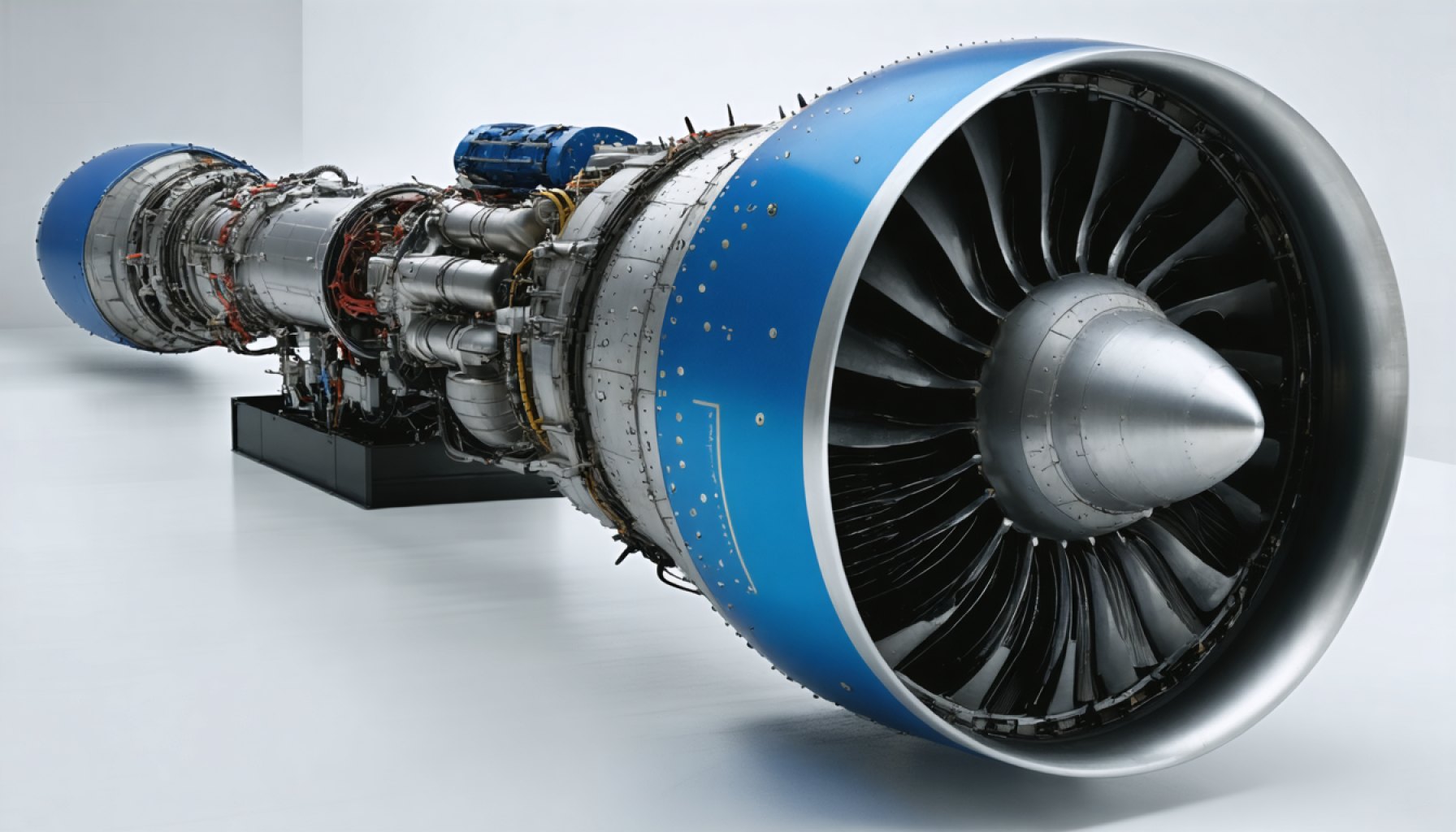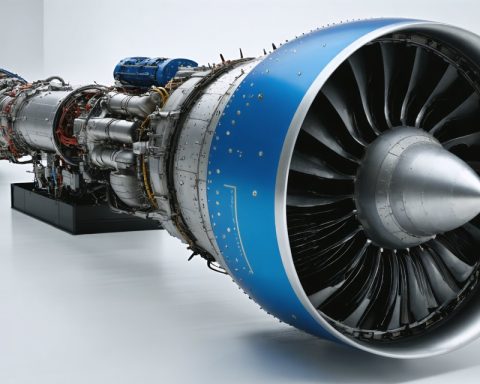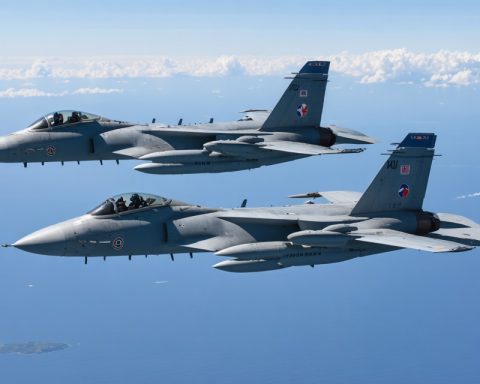- GE and Pratt & Whitney are advancing in the Next-Generation Adaptive Propulsion program with their innovative engines, XA102 and XA103, which have cleared “Detailed Design Reviews.”
- These engines are digitally designed, showcasing enhanced efficiency and resilience, with adaptive architectures for optimized fuel economy and thermal management.
- The NGAP program is integral to the Next-Generation Air Dominance (NGAD) fighter, but strategic uncertainties loom due to the paused NGAD program and potential changes with new Air Force leadership.
- Digital transformation and fiscal challenges create a complex environment for the future of military aviation, as GE and Pratt & Whitney lead the charge.
- The balance between cutting-edge technology and budgetary constraints will shape the direction of air combat capabilities and America’s aerial superiority.
Two titans of aerospace, GE and Pratt & Whitney, surge forward in a race to define the future of military aviation. Their innovative engines have passed the rigorous “Detailed Design Reviews,” nudging them closer to realizing prototypes for the Air Force’s Next-Generation Adaptive Propulsion (NGAP) program. This heralds a new era of propulsion destined to empower the elusive Next-Generation Air Dominance (NGAD) fighter.
These engines aren’t merely feats of engineering; they’re monuments to digital transformation. GE’s XA102 and Pratt’s XA103 are conceived through advanced modeling, exploring realms where traditional drafting dared not tread. The engines, spun from digital threads, promise to weave a tapestry of unparalleled efficiency and resilience. They boast adaptive architectures that whisper promises of optimized fuel economy and advanced thermal management, crucial for retaining America’s aerial supremacy.
Yet, like any grand endeavor, the path forward teeters on a precipice of uncertainty. The shadow of the NGAD program, paused amidst strategic reassessments, looms over the unpredictable horizon. With the incoming Air Force Secretary nominee, Troy Meink, poised to make pivotal decisions, industry insiders hold their breath. Will the NGAD program soar to new heights or be reshaped by emerging threats and fiscal constraints?
As digital innovation and strategic uncertainty dance in the skies, the takeaway is clear: the future of air combat hangs in a delicate balance where cutting-edge technology and fiscal prudence must find accord. One thing remains certain: GE and Pratt & Whitney are ready, engines roaring, on the cusp of a new aviation era. The world waits and watches as these aerospace giants race towards an uncertain, yet undeniably thrilling, future.
The Future of Military Aviation: How GE and Pratt & Whitney Could Shape Tomorrow’s Battles
How-To Steps & Life Hacks: Navigating the Future of Aviation Technology
1. Understanding Next-Generation Engines: Learn about Adaptive Cycle Engines (ACE) technologies which combine the best elements of traditional engines and adaptive features to optimize performance across a range of speeds and altitudes.
2. Utilizing Digital Twins: Aerospace companies leverage digital twin technology for predictive maintenance and engine performance optimization. This involves creating virtual replicas of physical engines, allowing engineers to test scenarios without physical prototypes.
3. Keep Up with Industry Updates: Regularly follow trusted aerospace publications and defense industry reports to stay informed about advancements in propulsion technologies.
4. Develop Skills in Digital Engineering: For professionals in the aerospace sector, gaining proficiency in digital modeling and advanced simulation tools is essential.
Real-World Use Cases: Where Will These Engines Be Used?
– Next-Generation Air Dominance (NGAD) Fighters: The most immediate application of these engines will be on the NGAD platform, which aims to provide significant advantages in air superiority.
– Enhanced Tactical Fighter Jets: Beyond NGAD, these engines can be adapted for existing aircraft platforms, potentially extending the life and enhancing the capabilities of current Air Force fleets.
Market Forecasts & Industry Trends
– Increasing Defense Budgets: With global geopolitical tensions on the rise, many nations are increasing their defense budgets, focusing on next-generation military technology.
– Shift Towards Sustainable Aviation: The industry is leaning towards engines with improved fuel efficiency and reduced emissions, factors that GE and Pratt & Whitney’s adaptive engines claim to address.
Reviews & Comparisons: GE XA102 vs. Pratt XA103
– Specs & Performance: Both engines promise remarkable fuel efficiency and adaptive performance, though they may differ in terms of integration with current aircraft technologies.
– Industry Reception: Experts often cite GE’s historic reliability and Pratt & Whitney’s innovative approaches when evaluating these engines. Both companies maintain solid reputations in their field.
Controversies & Limitations
– Program Delays and Budget Constraints: The NGAD program’s uncertain future, due to potential budget cuts and strategic adjustments, could impact the deployment of these engines.
– Technology Maturity: Advanced modeling and digital twins are relatively new fields and may not yet offer the level of certainty provided by years of traditional design and testing methods.
Security & Sustainability Concerns
– Cybersecurity Risks: As digital integration increases, so do the risks. Both companies must ensure that their systems are safeguarded against cyber threats.
– Environmental Impact: Emphasizing efficiency can significantly reduce the carbon footprint of military aviation, aligning with broader sustainability goals worldwide.
Insights & Predictions
– Adaptation for Commercial Use: The innovations in military engines could eventually transition into commercial aviation, potentially transforming civilian air travel with the same levels of efficiency and performance.
– Broader Implications for Defense Tech: Advances in aerospace propulsion technology could drive innovations in other defense sectors, such as drones and autonomous vehicles.
Pros & Cons Overview
Pros:
– Enhanced performance and operational capability.
– Improved fuel efficiency and adaptive operation.
– Cutting-edge digital design approaches.
Cons:
– High development costs and potential budget issues.
– Uncertainty in program continuation.
– Reliance on emerging and potentially unproven technologies.
Actionable Recommendations
– For Aerospace Enthusiasts: Stay updated with newsletters and industry conferences focusing on aerospace innovations.
– For Investors: Consider the long-term potential and risk when investing in companies involved in next-generation military technologies.
– For Defense Planners: Weigh the benefits of adaptive engines against traditional propulsion with respect to cost, reliability, and strategic needs.
For more information about these technological advancements, visit these reputable sources GE and Pratt & Whitney.








